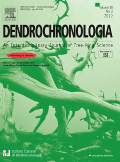
DENDROCHRONOLOGIA
Scope & Guideline
Connecting Nature's History with Today's Challenges
Introduction
Aims and Scopes
- Dendroclimatology:
Research on the relationships between tree growth and climatic variables, using tree rings as proxies to reconstruct historical climate patterns and assess the impacts of climate change. - Wood Anatomy and Physiology:
Investigation of the anatomical features of wood and their physiological implications, including studies on wood density, vessel characteristics, and intra-annual growth patterns. - Ecological Responses to Climate:
Studies examining how trees and forests respond to climate variability and extremes, including droughts, temperature changes, and disturbances such as wildfires. - Dendroecology:
Research on the ecological interactions of trees, focusing on species-specific growth responses, competition, and the effects of environmental factors on tree health and growth. - Methodological Advances in Dendrochronology:
Development and application of innovative techniques and technologies for tree-ring analysis, including imaging, isotopic analysis, and statistical modeling. - Historical and Archaeological Applications:
Use of dendrochronology in historical and archaeological contexts to date wooden artifacts, understand past human-environment interactions, and reconstruct historical land use.
Trending and Emerging
- Climate Change Impacts on Tree Growth:
A growing body of research is focusing on how climate change, particularly extreme weather events and shifting climatic zones, affects tree growth patterns and forest dynamics. - Isotopic Analysis in Dendrochronology:
The use of stable isotopes within tree rings to study physiological responses to environmental changes is on the rise, providing insights into water use efficiency and climate signals. - Technological Innovations:
Emerging technologies, such as machine learning and advanced imaging techniques, are being increasingly applied to enhance dendrochronological research, allowing for more precise measurements and analyses. - Interdisciplinary Approaches:
There is a notable trend towards interdisciplinary research that combines dendrochronology with fields such as genetics, ecology, and remote sensing to address complex ecological questions. - Global Change and Forest Resilience:
Research is increasingly examining forest resilience and adaptive capacity in the face of global changes, with a focus on management practices that promote sustainability and biodiversity.
Declining or Waning
- Traditional Dendrochronological Techniques:
Research focusing solely on basic tree-ring width measurements is declining as more advanced methods and interdisciplinary approaches become prevalent. - Local Case Studies:
There is a waning emphasis on narrowly focused regional studies, with a trend towards broader, comparative analyses that encompass multiple species and regions. - Historical Climate Reconstructions:
While still relevant, the frequency of papers solely dedicated to reconstructing historical climate events using tree rings has decreased, possibly due to the increasing integration of other data sources and methodologies.
Similar Journals
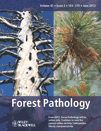
FOREST PATHOLOGY
Enhancing Ecological Resilience Through Pathology InsightsFOREST PATHOLOGY is a premier journal published by Wiley that focuses on the intricate relationships between trees, pathogens, and forest health. With an ISSN of 1437-4781 and an E-ISSN of 1439-0329, this British journal has garnered an impressive reputation in the fields of Ecology and Forestry, achieving a Q2 Quartile ranking in both categories as of 2023. The journal invites researchers and professionals to explore cutting-edge studies and case reports that delve into forest pathology, contributing to the understanding of disease dynamics and management in forest ecosystems. Currently indexed in Scopus, it ranks 61st out of 174 in the Forestry category and 214th out of 461 in Ecology, reflecting its impact and relevance in advancing the field. Access options are available to cater to a wide audience, emphasizing the journal's commitment to disseminating vital knowledge that enhances forest management practices and ecological resilience. FOREST PATHOLOGY stands as an essential resource for those dedicated to the health and sustainability of forest ecosystems.

TREE PHYSIOLOGY
Uncovering the Dynamics of Tree Growth and HealthTREE PHYSIOLOGY, published by Oxford University Press, is a leading journal dedicated to the field of plant science and physiology, with a significant impact factor that highlights its importance in the academic community. Established in 1990, this journal has evolved to encompass a wide range of topics relating to the physiological processes of trees and woody plants, offering valuable insights to researchers and professionals alike. With its Q1 ranking in Plant Science and Q2 in Physiology for 2023, TREE PHYSIOLOGY is recognized for its high-quality, impactful research articles. Its Scopus rankings further emphasize its relevance, placing it in the top percentile within its categories, making it an essential resource for those involved in agricultural and biological sciences. Although it does not currently offer Open Access options, the journal remains committed to promoting the advancement of knowledge through rigorous peer review and scholarly excellence. Located in the United Kingdom, it serves an international audience, fostering collaboration and innovation in the study of tree physiology.

BOSQUE
Empowering Researchers in Environmental StewardshipBOSQUE, published by Universidad Austral de Chile, Facultad de Ciencias Forestales, stands as a pivotal platform for advancing the field of forestry and related environmental sciences. With an ISSN of 0717-9200, this journal has been committed to disseminating original research, reviews, and case studies essential for understanding forest ecosystems and management practices since its inception in 2006. As of 2023, it holds a Q3 ranking in the forestry category, showcasing a significant yet developing influence in the broader academic landscape, evidenced by its Scopus ranking placing it at the 12th percentile in Agricultural and Biological Sciences - Forestry. While boasting a diverse range of articles, BOSQUE promotes open access to a growing community of researchers, professionals, and students eager to contribute to sustainable forest management and conservation efforts. The journal continues to foster critical dialogue and innovation, making it an invaluable resource for those dedicated to enhancing forest sciences.

NEW FORESTS
Leading the Charge in Forestry Research.NEW FORESTS, published by SPRINGER, stands at the forefront of forestry research, delivering cutting-edge insights into forest science, management, and conservation. With an ISSN of 0169-4286 and an E-ISSN of 1573-5095, this esteemed journal has earned a distinguished reputation as it continues to contribute significantly to the field since its inception in 1986. As evidenced by its impressive ranking in the Q1 category for Forestry and being positioned at #32/174 in the Scopus Ranks for Agricultural and Biological Sciences, NEW FORESTS maintains an 81st percentile standing, emphasizing its influential role in advancing scientific discourse. The journal focuses on a diverse array of topics within the realm of forestry, making it an essential resource for researchers, professionals, and students eager to engage with contemporary developments and challenges in forest ecosystems. Although it is not an open-access journal, access to its articles can be facilitated through various academic institutions and libraries, ensuring that vital research is available to a broad audience. As we look toward the future, NEW FORESTS continues to strive for excellence, fostering dialogue and collaboration among scholars committed to sustainable forest management and restoration until at least 2024.
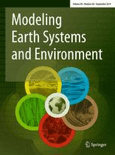
Modeling Earth Systems and Environment
Transforming research into actionable solutions for our planet.Modeling Earth Systems and Environment is a premier interdisciplinary journal published by Springer Heidelberg, dedicated to advancing the understanding and modeling of Earth's systems and environmental processes. Since its inception in 2015, this journal has established itself as a vital resource within the academic community, attaining a Q1 ranking in Agricultural and Biological Sciences and Q2 rankings in Computers in Earth Sciences, Environmental Science, and Statistics, reflecting its high impact and relevance across multiple disciplines. Featuring rigorous peer-reviewed research, Modeling Earth Systems and Environment aims to bridge the gap between theory and practical application, fostering collaboration among researchers, professionals, and students alike. With access options that prioritize the dissemination of knowledge, this journal is crucial for those seeking to contribute to the fields of environmental modeling and systems science, encouraging innovations that address contemporary environmental challenges.
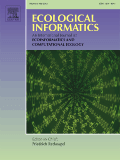
Ecological Informatics
Advancing ecological solutions through cutting-edge informatics.Ecological Informatics is a premier journal published by Elsevier, dedicated to advancing the interdisciplinary fields of ecology and informatics since its inception in 2006. With its ISSN 1574-9541 and E-ISSN 1878-0512, this Netherlands-based journal has established itself as a leading platform for high-quality research, reflected in its impressive Q1 rankings across multiple categories including Applied Mathematics, Computational Theory, Ecology, and Ecological Modeling, showcasing its critical role in shaping scientific discourse in these important domains. The journal ranks in the top percentiles for various fields: for instance, it stands at rank #26/635 in Applied Mathematics and #8/41 in Ecological Modeling according to Scopus. Though it currently does not offer open access options, its commitment to publishing impactful studies underscores its significance to researchers, professionals, and students interested in ecological and computational methodologies. Researchers in these fields are encouraged to explore and contribute to this respected journal as it continues to inspire innovative solutions for ecological challenges.
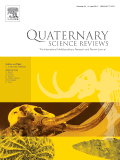
Quaternary Science Reviews
Bridging Archaeology, Ecology, and GeologyQuaternary Science Reviews is a premier international journal published by PERGAMON-ELSEVIER SCIENCE LTD, dedicated to the multidisciplinary study of the Quaternary period and its implications across a variety of scientific fields, including archaeology, geology, ecology, and environmental science. With an impressive impact factor that places it in the Q1 quartile across multiple categories such as Archaeology, Ecology, and Geology, it stands as a beacon of scholarly excellence. The journal, which has been in circulation since 1982 and converges its knowledge through to 2024, is instrumental for researchers and professionals seeking to explore the complexities of climate change, biodiversity, and earth systems. Though it does not currently offer Open Access options, its well-curated content remains vital for academic advancement and is accessible to a broad audience through institutional subscriptions. Positioned at the forefront of modern scientific inquiry, the journal fosters an environment for sharing pivotal findings and fostering intellectual discussions, making it an indispensable resource for students, practitioners, and researchers alike.
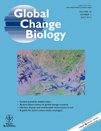
GLOBAL CHANGE BIOLOGY
Connecting Science to Policy in a Changing WorldGLOBAL CHANGE BIOLOGY, published by Wiley, is a leading journal dedicated to advancing the scientific understanding of the relationships between biological systems and global environmental changes. With an impressive impact factor placing it in the Q1 category across multiple disciplines—including Ecology, Environmental Chemistry, and Global and Planetary Change—this journal is essential for researchers, professionals, and students aiming to stay at the forefront of this dynamic field. The journal has a rich history since its inception in 1995, continually providing a platform for high-quality research that informs policy and management practices worldwide. Although it is not open access, the journal remains a valuable resource for those committed to exploring the complexities of ecological and environmental change. With a Scopus ranking of #3 in Global and Planetary Change and #6 in both Ecology and Environmental Chemistry, GLOBAL CHANGE BIOLOGY continues to shape the dialogue on the pressing environmental challenges of our time.

TREES-STRUCTURE AND FUNCTION
Pioneering insights into the structure and function of trees.TREES - STRUCTURE AND FUNCTION, published by Springer Heidelberg, is a leading journal dedicated to advancing the scientific understanding of tree biology through rigorous research and interdisciplinary approaches. With an impressive impact factor reflecting its high visibility in the scholarly community, this journal specializes in various aspects of tree ecology, physiology, and structure, making it a vital resource for researchers, professionals, and students engaged in forestry and environmental sciences. The journal holds notable rankings, placing it in the top quartiles of several categories, including Q1 in Forestry and Q2 in Ecology as of 2023, underscoring its relevance and influence in the field. Although it is not an open-access journal, TREES strives to disseminate critically important findings that contribute to our understanding of global forest ecosystems and their role in climate change mitigation. With a publication history spanning from 1986 to 2024, this journal continues to shape the future of tree research, providing a platform for innovative studies that inform policy, conservation, and sustainable practices.

Regional Environmental Change
Exploring the Dynamics of Environmental TransformationRegional Environmental Change, published by SPRINGER HEIDELBERG, is a leading journal dedicated to the critical field of Environmental Science, specifically focusing on the global and planetary changes affecting our regional environments. Since its inception in 2005 and continuing through 2024, the journal has been a pivotal platform for disseminating cutting-edge research, insights, and methodologies that address pressing environmental issues. With an impressive Scopus rank, placing it in the top 30% of journals in its category, Regional Environmental Change (ISSN: 1436-3798; E-ISSN: 1436-378X) showcases high-quality academic articles that engage with the multifaceted impacts of environmental shifts, providing researchers, professionals, and students with vital knowledge and data. Although the journal does not currently offer Open Access, it remains a crucial resource for those committed to understanding and mitigating the effects of environmental change on regional ecosystems and communities.